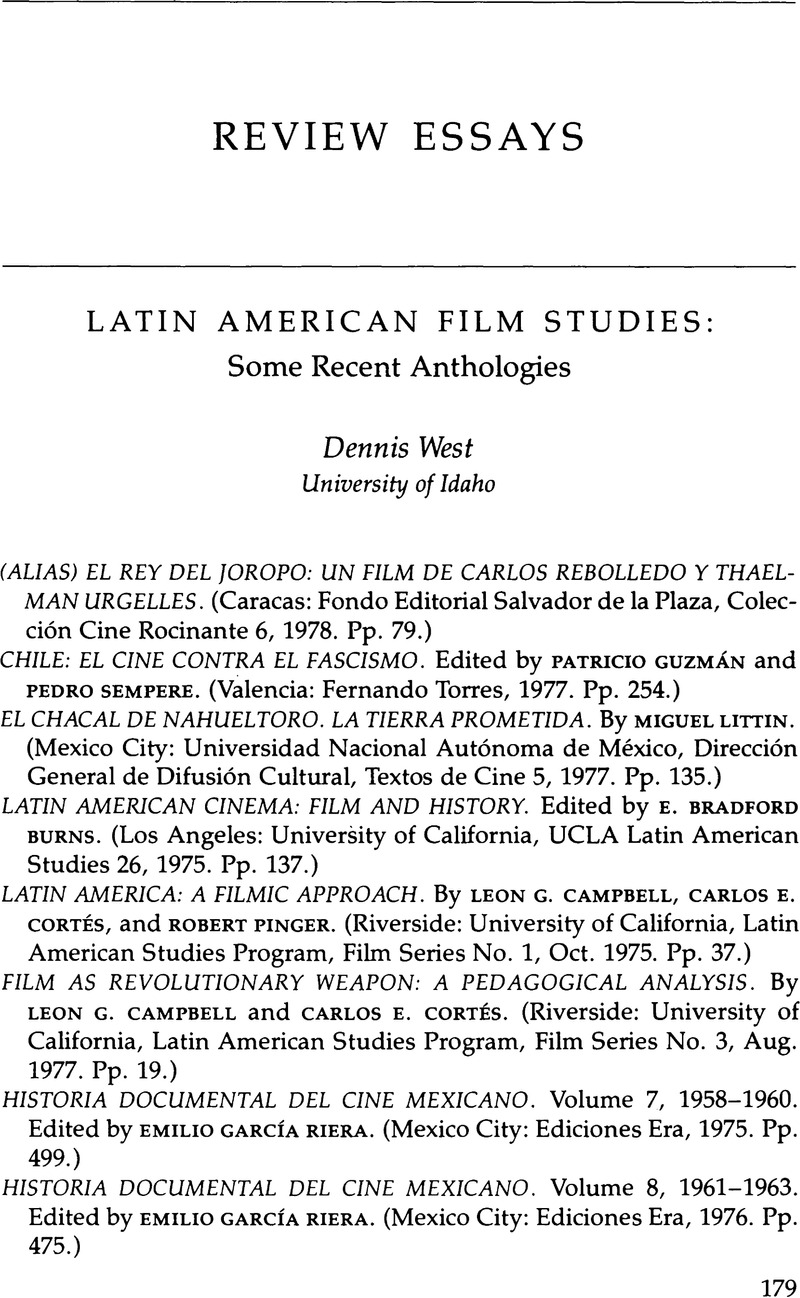No CrossRef data available.
Published online by Cambridge University Press: 24 October 2022

1. “Towards Practical Criticism,” AFI Education Newsletter 4, no. 4 (Mar.–Apr. 1981): 1–2, 10–11. This article provides a thorough survey of the obstacles—particularly the absence of texts—presently facing film studies.
2. The Philosophy of Art History (Cleveland and New York: The World Publishing Co., 1963), p. 363.
3. Campbell and Cortés prepared Latin America: A Filmic Approach with the assistance of Robert Pinger, a student at the University of California, Riverside.
4. García Riera's history is a continuing project; only nine volumes have appeared to date.
5. Historia documental del cine mexicano, Volume 1, 1926–1940 (Mexico City: Ediciones Era, 1969), p. 7.
6. In this essay Aurelio de los Reyes continues the historical research that he initiated in Los orígenes del cine en México (1896-1900) (Mexico City: UNAM, Dirección General de Difusión Cultural, 1973).
7. “El cine chileno,” in Los años de la conmoción, p. 255.
8. Glauber Rocha, “The Aesthetics of Violence,” in Latin American Film Makers and the Third Cinema, p. 154.
9. “Declaración de los cineastas latinoamericanos,” in El cine latinoamericano, p. 192.
10. Alfonso Gumucio Dagron's Cine, censura y exilio en América Latina (La Paz: Ediciones Film/Historia, 1979) is a country-by-country examination of the censorship and repression that have plagued Latin American filmmakers, particularly those associated with the New Latin American Cinema Movement. The scholarly value of this work is limited because the author does not provide specific bibliographical references to document fully the cases of repression that he cites.
11. Una imagen recorre el mundo, p. 1.
12. Una imagen recorre el mundo contains all of García Espinosa's essays published in the collection Por un cine imperfecto and also four additional essays.
13. Anna Marie Taylor's “Imperfect Cinema, Brecht, and The Adventures of Juan Quin Quin” in Jump Cut, no. 20, pp. 26–29 is the only study I have seen that examines the relationship between García Espinosa's notion of imperfect cinema and his own films.